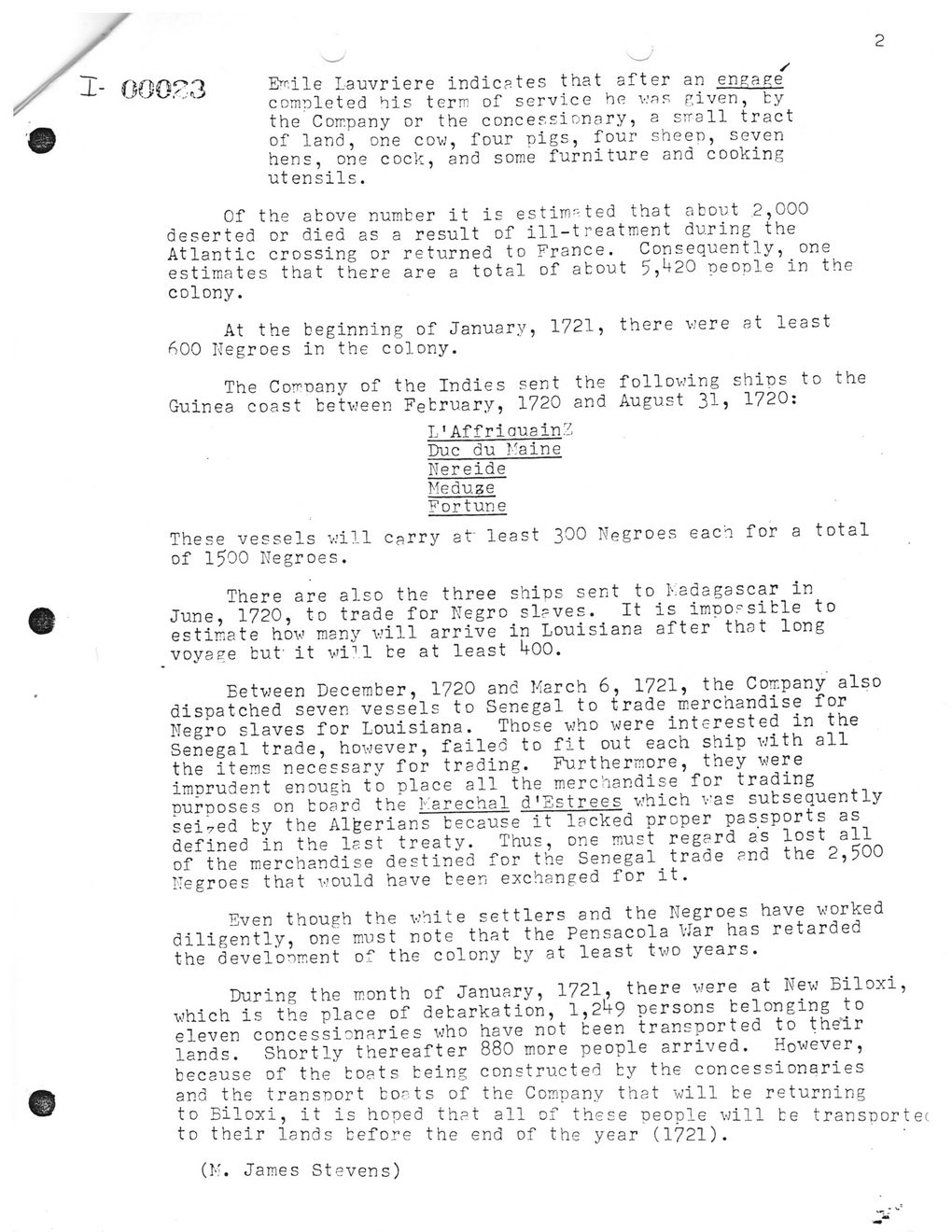This text was obtained via automated optical character recognition.
It has not been edited and may therefore contain several errors.
000.-3 Emile Lauvriere indicates that after an engage CDmnleted his term of service he was given, by the Company or the concessionary, a srrall tract of land, one cow, four pigs, four sheep, seven hens, one cock, and some furniture and cooking ut ensils. Of the above number it is estim-ted that about .2,000 deserted or died as a result of ill-treatment during the Atlantic crossing or returned to France. Consequently, one estimates that there are a total of about 5,^20 people in the colony. At the beginning of January, 1721, there v:ere at least 600 Negroes in the colony. The Comnany of the Indies sent the follov.'ing ships to the Guinea coast between February, 1720 and August 315 1720: I1 Affriauain?. Due du Maine Nereide Meduge Fortune These vessels will carry at least 300 Negroes each for a total of 1500 Negroes. There are also the three ships sent to Madagascar in June, 1720, to trade for Negro slaves. It is impossible to estimate how many will arrive in Louisiana after that long voyage but' it winl be at least ^00. Betveen December, 1720 and March 6, 1721, the Company also dispatched seven vessels to Senegal to trade merchandise for Negro slaves for Louisiana. Those who were interested in the Senegal trade, however, failed to fit out each ship with all the items necessary for trading. Furthermore, they were imprudent enough to place all the merchandise for trading purposes on board the Karechal d’Estrees which was subsequently seized by the Algerians because it lacked proper passports as defined in the last treaty. Thus, one must regard as lost all of the merchandise destined for the Senegal trade and the 2,500 Negroes that would have been exchanged for it. Even though the white settlers and the Negroes have worked diligently, one must note that the Pensacola VJar has retarded the development of the colony by at least two years. During the month of January, 1721, there were at New Biloxi, which is the place of debarkation, 1,24-9 persons belonging to eleven concessionaries who have not been transported to the’ir lands. Shortly thereafter 880 more people arrived. However, because of the boats being constructed by the concessionaries and the transport boots of the Company that will be returning to Biloxi, it is hoped that all of these neople will be transport to their lands before the end of the year (1721). (M. James Stevens)

New Orleans and Louisiana Document (010)